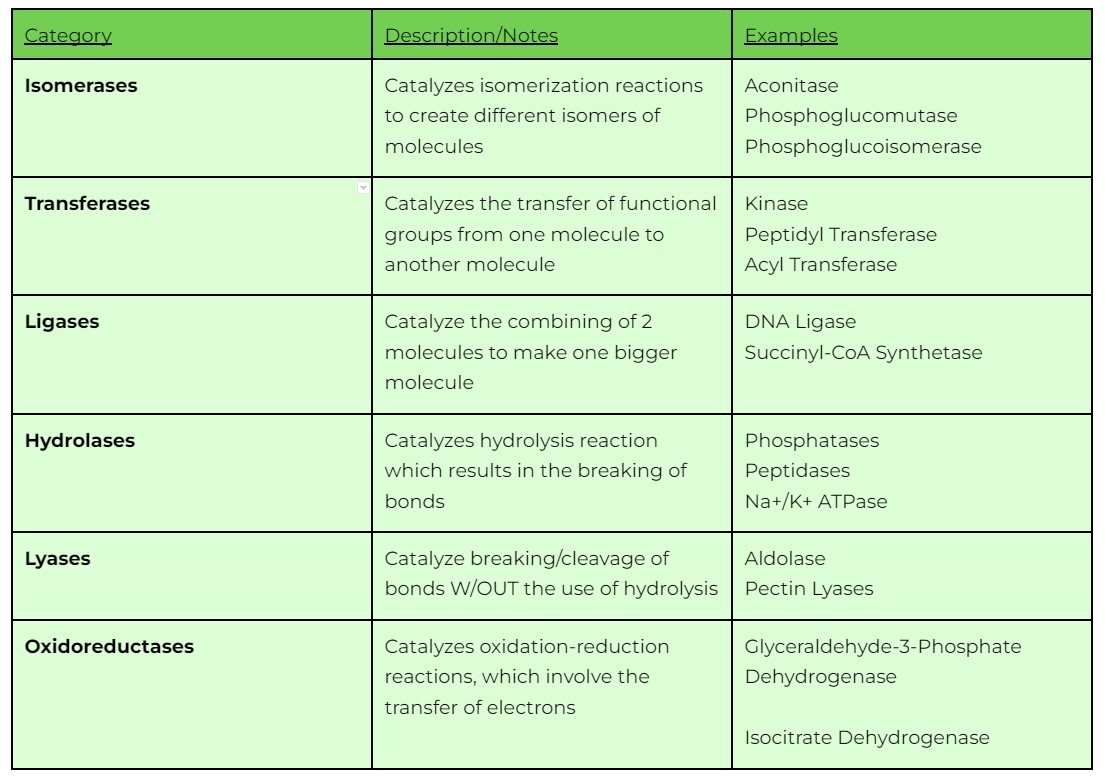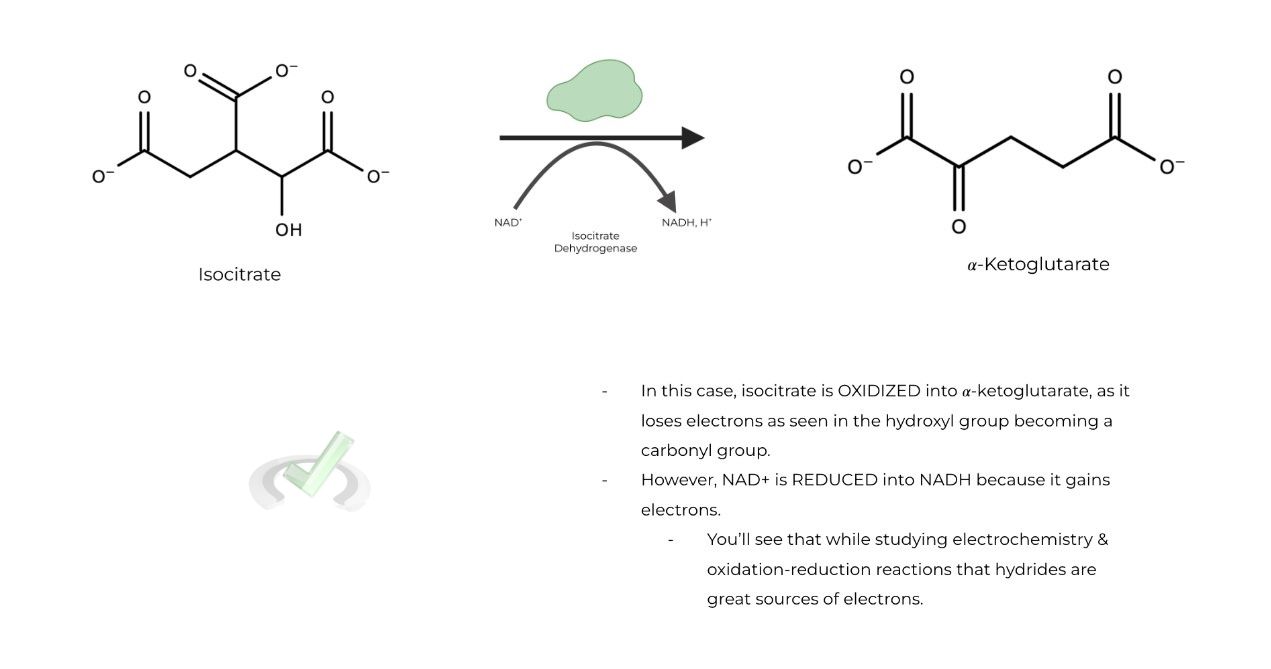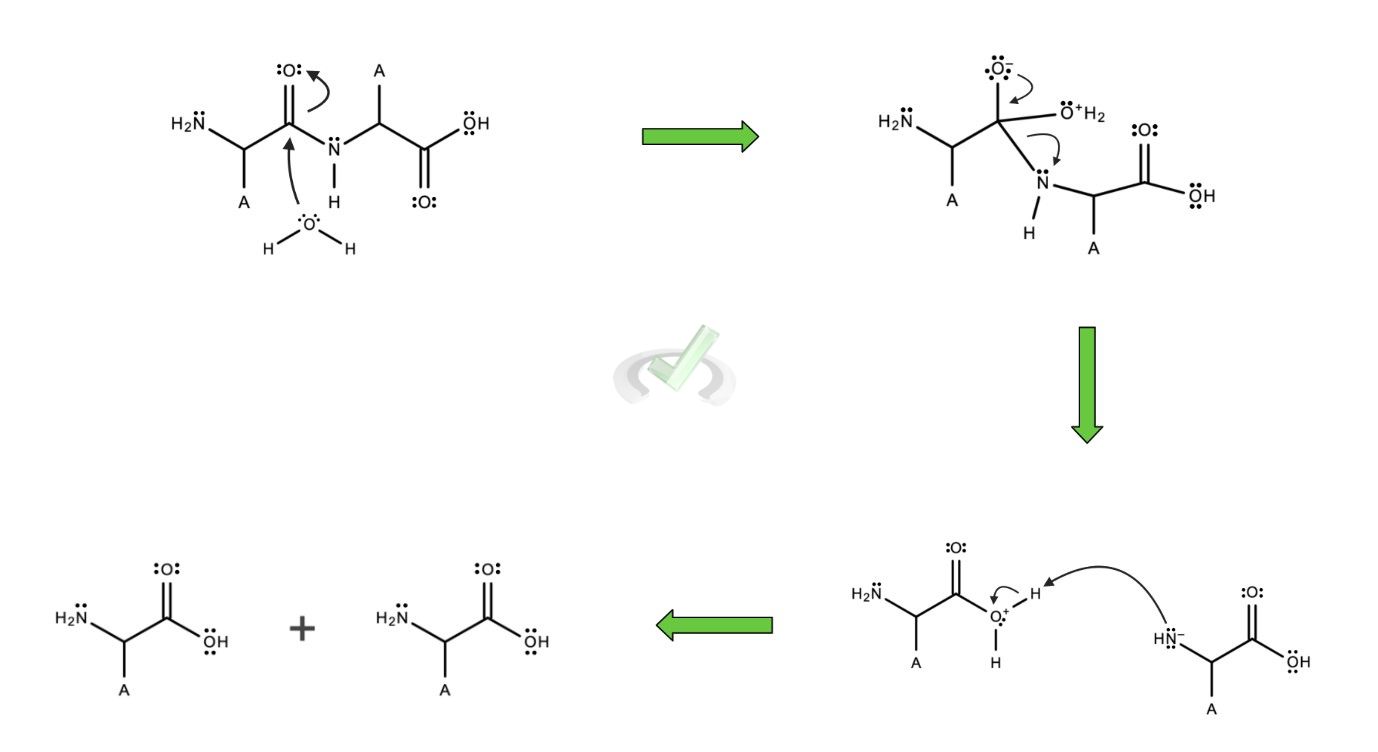I. What are Enzyme Models & Classification?
You’ll without a doubt be introduced to various models & classification, so what better way to start than with enzymes, specialized proteins so vital for our daily life!
Enzyme models refers to the theories & models about how enzymes interact with their substrates, which ultimately allows them to accomplish their function (luckily, there’s only 2 to focus on!). Enzyme classification is exactly what it sounds like: it refers to how we can classify enzymes based on their various specialized functions.
Similar to some other content covered in our other study articles, it’s not so important to become experts in these topics; rather, you should put added emphasis on understanding the applications of these theories and classifications to other important biological and biochemical functions, as we’ll talk about later in the article.
II. Content Review
Just like the evolution of video game consoles, from the Atari I all the way to the Playstation 5, enzyme models have also undergone changes in explanation, with the newer models being better supported by research. As stated above, you only need to be familiar with 2 types of enzyme models:
The Lock & Key Model describes the enzyme & substrate interaction as completely complementary to one another: that is, the enzyme’s active site (lock) assumes a certain shape/conformation that allows the substrate (key), which as a complementary shape/conformation, to fit & bind nicely in the active site.

However, the limitation with this theory is that it doesn’t account for the conformational changes that the enzyme makes during substrate binding as indicated in research. To sum it up in one other, this theory makes enzyme-substrate binding “rigid”.
The Induced Fit Model on the other hand takes these conformational changes into account! This model is a more dynamic process, where during initial enzyme-substrate binding, there is no definitive shape.
Over time, however, the binding interactions between the enzyme & substrate results in a change in conformational shape in the enzyme, which eventually results in a complementary active binding site to the substrate ⇒ hence the name, “induced fit’.

However, this does not mean that any substrate can bind to the enzymes! Remember: enzymes are specific to one substrate (in some cases, a specific set of substrates) which they can act on.
Try to think about this analogy to help you picture the theory! Let’s say you have a memory foam bed in your room that you sleep in. Although flat at first, once you lie down on the bed, over time the memory foam bed begins to take on the shape & outline of your body. Come morning, you get a good night's rest & are ready for another great day of MCAT study!
Likewise, just like enzymes, you may be the only one that sleeps on your bed or maybe other family members! However, you probably won’t let some random person sleep on your bed
Enzymes can also be classified by type, specifically what type of function they specialize in. Take a look at the chart below to learn or get a refresher about the different enzyme types!

Additional Notes about Enzyme Classification:
III. Bridge/Overlap
As shown in the example column of the table listing all the different categorization types of enzymes, you can already get a good idea of how an enzyme functions just based on its name!
For example:
Likewise, because enzymes catalyze a wide variety of reactions, it’s probably best to at least familiarize yourself with some of the basic reactions:
Oxidation-Reduction Reactions:
These reactions involve the transfer of electrons! You’ll definitely cover this in more depth in some of our oxidation-reduction reactions and electrochemistry study articles, but these reactions can be nicely summed up in the mnemonic below:

Oxidation-Reduction reactions will make up the most of reactions included in glycolysis and the Krebs Cycle, as these reactions result in the oxidation of glucose into high energy electron carriers which can undergo oxidative phosphorylation to generate ATP.
Take for example the reaction catalyzed by isocitrate dehydrogenase during the Krebs Cycle.

Hydrolysis Reactions
These reactions involve the breaking of bonds utilizing a water molecule! Hydrolysis reactions are also important, as they are utilized in a variety of reactions vital for biological function. We’ve already listed several enzymes which utilize hydrolysis to function including ATPases, GTPases, etc.
Hydrolysis reactions can also be viewed in an organic chemistry perspective as a nucleophilic substitution reaction as well! Take a look below at the mechanism of hydrolysis being used to break apart peptide bonds!!

IV. Wrap Up/Key Terms
Let’s take this time to wrap up & concisely summarize what we covered above in the article!
There are 2 main theories of enzyme-substrate binding models that you should be familiar with for the MCAT:
The Lock & Key Model depicts the enzyme’s active binding site and the substrate each as having complementary shapes to one another, allowing for the substrate to fit nicely into the active site.
However, this theory does not take into account the protein conformational changes that take place during substrate binding as supported by research.
The Induced Fit Model does take into account the protein conformational changes that take place upon substrate binding. Initially during the enzyme-substrate interaction, the active site & the substrate don’t necessarily have a complementary shape to one another
However, over time the binding interactions induce a conformational change in the enzyme so that eventually, it does adopt a configuration complementary to the substrate.
Enzymes can also be classified/categorized by their function! There are 6 main categories, as listed below:
V. Practice
Take a look at these practice questions to see and solidify your understanding!
Sample Practice Question 1
During DNA replication, there are gaps (as a result of the Okazaki and lagging strand) between the nucleotides that need to be connected together. What type of enzyme would you expect to perform this function?
A. Oxidoreductase
B. Isomerase
C. Hydrolase
D. Ligase
Ans. D
A ligase is an enzyme which creates one bigger molecule from 2 smaller molecules. In this case, we are taking 2 nucleotides to make a bigger polynucleotide strand. As such, a ligase is utilized to accomplish this job, specifically DNA ligase.
Sample Practice Question 2
Which of the following is false?
A. When an isomerase catalyzes a certain reaction, the product has 1 more carbon atom than the starting reactant.
B. An enzyme that includes the word “dehydrogenase” in its name usually means it catalyzes the transfer of electrons between molecules.
C. Hexokinase is an example of a transferase enzyme & GTPase is an example of a hydrolase.
D. The Induced Fit Model of enzyme-substrate interaction is the model that is better supported by research.
Ans. A
An isomerase is a type of enzyme that catalyzes isomerization reactions, basically converting one molecular isomer to another molecular isomer. Isomers are molecules which have the same molecular formula, but only differ in the spatial and/or structural arrangement.
If an isomerase catalyzes a reaction, it is expected that the reactant should have the same number (and types) of atoms as the product. Thus, B. is false because the product contains 1 extra carbon atom.
B, C, & D are all correct!
A dehydrogenase usually indicates that the enzyme is an oxidoreductase enzyme, catalyzing oxidation-reduction reactions.
A hexokinase is an example of a transferase enzyme, as it will transfer 1 phosphate group from ATP to a glucose molecule. GTPase is an example of a hydrolase because it will breakdown GTP via hydrolysis.
The Induced Fit Model is better supported by research, as it takes into account the protein conformational changes that occur during enzyme-substrate binding.
VI. Additional Links
Here are some additional links to related articles & additional resources that will hopefully be helpful to you all!
“Enzyme Structure & Classification” Study Article: https://docs.google.com/document/d/1knFYiDcT_vZ1lZlJHlCQOuZbjTxXjYTQYwRkd-Cvr1I/edit?usp=sharing
“Enzyme Kinetics” Study Article: https://docs.google.com/document/d/1qF0Ltb3YkWSr1x_hzrqu52QnMZt9tU5oYp_djDxg-YY/edit?usp=sharing
“Enzyme Kinetics & Inhibitors” Quicksheets:
TBA


 To help you achieve your goal MCAT score, we take turns hosting these
To help you achieve your goal MCAT score, we take turns hosting these